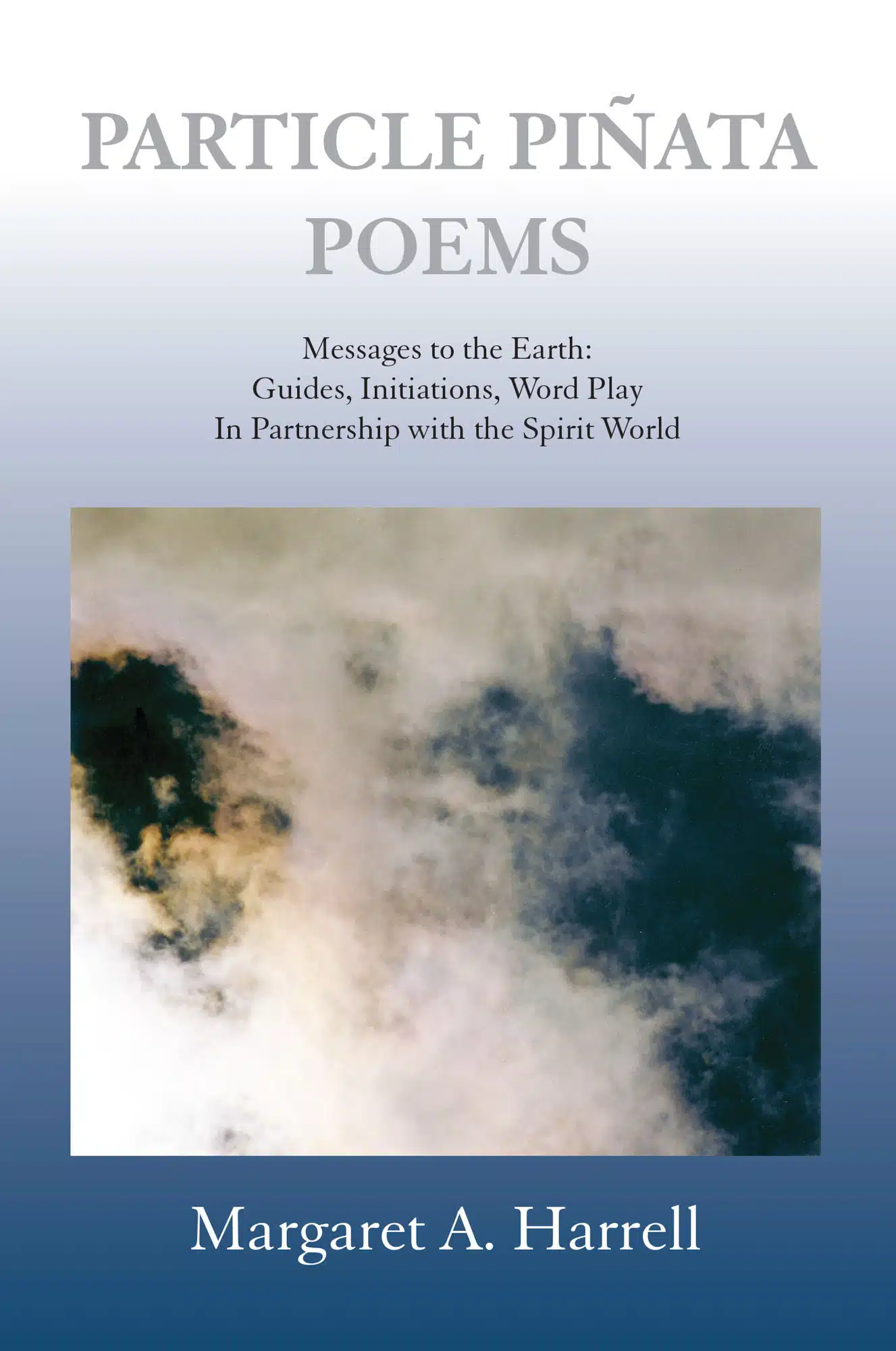The Particle Piñata collection spans over forty years of Life tackled from the heart. The genesis emerged when, living in Morocco in 1980, Margaret Ann Harrell began recording her dreams. And they poured in, introducing her to “image trails.” She was in deep contact with the unconscious. In it resided this poet, a “second-class citizen” of herself. The poet to whom words came easily because after all she was in the unconscious, whereas the conscious prose author struggled, edited, cut, sweated, and was published. No longer is the poet in the closet. Having been a spokesperson for “the unconscious,” or collective unconscious, before, in this poetry Harrell brings in the transpersonal nature of us all. From after-death communications to stimulating RUMI-nations to metaphysics in “a bottle,” her poems bring puzzles, thought-provoking, with depth. Many are “To the Earth,” announcing prophetically, in the 1980s, the upheaval we are seeing today. True to the brand of humor of the unconscious, there is a section of brilliant word play, narrating insights about the untold stories of Jesus and Mary Magdalene, the Christ spirit, and the universal Christ consciousness.
Harrell’s bold and searching collection takes readers on an odyssey of inquiry, with the first and foremost question being “How to establish that // Yes, I am // One with God and God is // One with You.” But rather than provide an answer, Harrell’s poems seek to use the question as a gateway into a thought-space where the act of seeking knowledge results in spiritual transcendence. In a note, Harrell describes her spirituality as a conscious, living thing shaped over time by a series of spiritual events she calls “initiations,” and through her poetry, Harrell seeks to divulge her spiritual wisdom.
The principle spiritual tenet in “Particle Piñata” is that all knowledge of the universe is united in an ever-shifting entity to which all people contribute and borrow, including the poet’s literary inspirations Baudelaire, Emerson, Whitman, and Joyce, and major figures from the poet’s own life, which include Milton Klonsky and Hunter Thompson. Primarily through the use of pun and other types of wordplay, Harrell’s poems establish linguistic relationships at the micro scale, between syllables in various languages, and at the macro scale, between hers and the works of Joyce and Baudelaire, and likens the behavior of the sacred whole of human knowledge to a mass of subatomic particles in perpetual cycles of unison and collapse.
Touching on religion, philosophy, particle physics, linguistics, and more heady concepts, Harrell’s collection is a cosmic, often esoteric whirlwind which seeks to bring the poet’s conception of a spiritual being to life. The style is pointedly erratic, even at times frenzied; consistent verb tenses, syntax, and connotations are flouted, upended, redefined. Yet there is a certain naturalness to the poetic discord, like the winds of a hurricane or flurry of a meteor shower. Nature is chaotic and unruly and, above all, free—and so are Harrell’s poems.
Takeaway: A cosmic, sophisticated collection that touches on spirituality, philosophy, and physics.
Great for fans of: Milton Klonsky, Delmore Schwartz.
Cover image: Margaret Harrell
Cover design: Deborah Perdue
